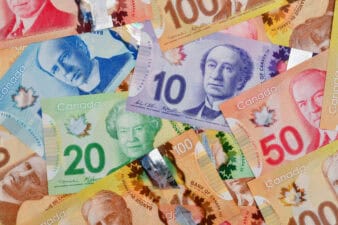I might be an avid investor, but I’m not a fan of stock picking. Personally, I find it time consuming, complicated, and stressful. I’m also embarrassingly bad at it. I’ve accepted that I can’t predict or time the market, nor devote the time to analyzing financial ratios and earnings calls.
For this reason, I’m a fan of “lazy” investment portfolios using exchange-traded funds (ETFs) — ones that anyone can set up within minutes, automate contributions, and check on once or twice per year. Keeping investing accessible, simple, and consistent is the key to success here.
Why a lazy portfolio?
For most investors, it is exceedingly difficult to consistently beat the market in the long run. Even professional fund managers often fail to outperform a simple index fund. Once you accept this, you can instead aim to match its returns with the least amount of effort and cost possible.
The goal here is to find the best ETFs that maximize exposure to the broad market and offer the lowest management expense ratios (MER). This helps reduce sources of risk that are controllable — underdiversification and high fees.
The four-fund lazy portfolio
The Canadian four-fund lazy portfolio takes 15 minutes to set up and another 15 minutes every year to re-balance. It costs 75% less in fees than a mutual fund from a financial advisor and will match the market return. It consists of four ETFs in the following allocations:
- A Canadian equity market ETF (20%)
- A U.S. equity market ETF (50%)
- An international developed markets ETF (20%)
- An international emerging markets ETF (10%)
We want to keep the Canadian portion of our portfolio overweight relative to its actual world market cap weight (3%), anywhere from 20-30%. This is called “home-country bias.” It lowers fees and taxes, reduces volatility, and hedges against currency risk.
Keep in mind that this version is also 100% stocks, which are suitable only for investors with a high risk tolerance or a long time horizon. Other investors may want to include a 10-40% bond allocation.
Which ETFs to use?
To invest in the Canadian stock market, consider buying iShares Core S&P/TSX Capped Composite Index ETF (TSX:XIC). XIC holds over 250 large-, mid-, and small-cap domestic stocks for an MER of 0.06% and has $9.7 billion in AUM.
To track the U.S. market, a good bet is iShares Core S&P US Total Market Index ETF (TSX:XUU), which tracks over 3,000 large-, mid-, and small-cap U.S. stocks for just 0.07% MER.
For international developed markets, invest in iShares Core MSCI EAFE IMI Index ETF (TSX:XEF), which holds 2,605 stocks from Japan, the U.K., France, Switzerland, Australia, Germany, etc. for a 0.22% MER.
Finally, for international emerging markets, try iShares Core MSCI Emerging Markets IMI Index ETF (TSX:XEC), which holds 2,581 stocks from China, Taiwan, India, Korea, Brazil, Russia, etc. for a 0.26% MER.
How do I manage this portfolio?
Once you have purchased these four ETFs in their proper allocations, you only have two tasks:
- Every month, deposit money into your brokerage account and purchase equal amounts of each ETF.
- At the start of every quarter, rebalance your portfolio by buying and selling shares until each asset is back to their original allocated percentage.
That’s it. You must resist the urge to tinker by overweighting geographies, trying to time the market, or buying hot stocks. Think of your lazy portfolio as a bar of soap — the more you handle it, the more it shrinks. Put your investment on autopilot and enjoy life!








